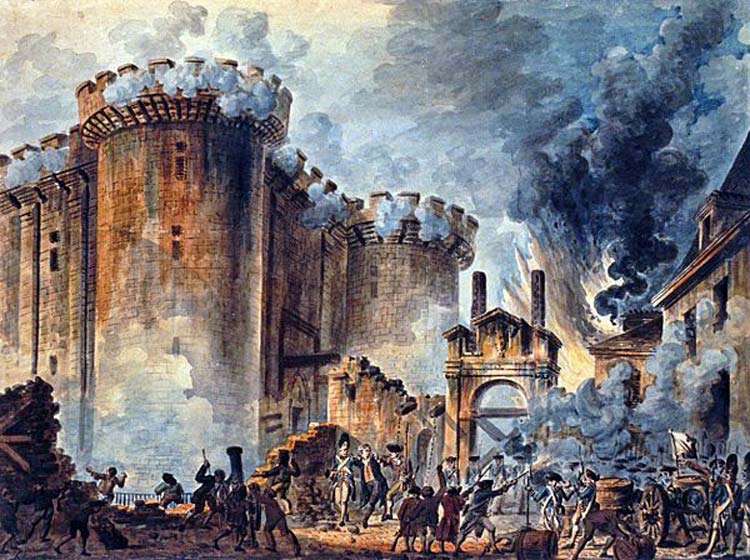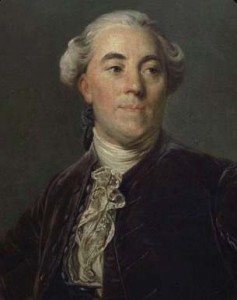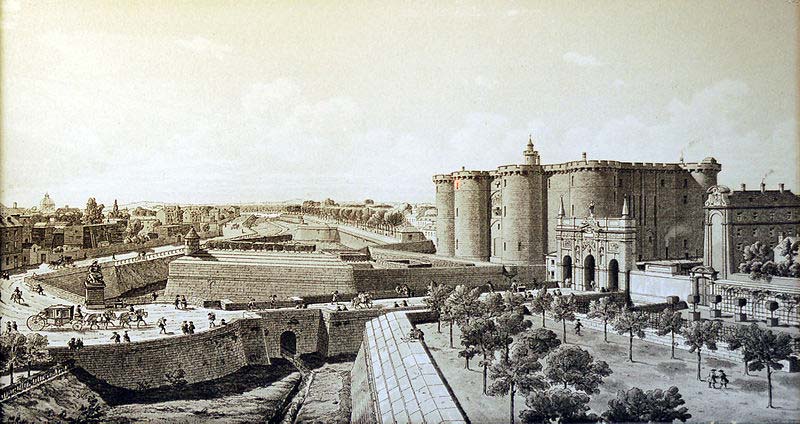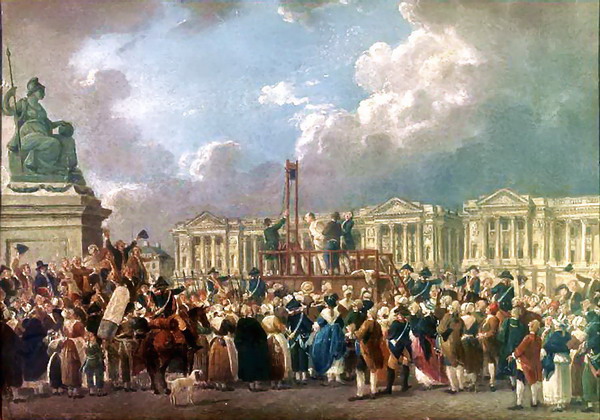The storming of the Bastille is an event of the French Revolution which took place on 14 July 1789.
The surrender of the Bastille, a symbol of despotism, was the effect of an earthquake, in France as in Europe, to the distant imperial Russia. “Strength of secret place and without justice, the Bastille was the first event of the Revolution.” On 14 July 1789, the day the Bastille is stormed by Parisian is traditionally considered as the beginning of the end of the “old regime” and the beginning of the French Revolution.
The Festival of the Federation was organized on the same date the following year, to coincide with the first anniversary of the event.

What happened on July 14 Bastille day
Historiography and legend
The people had left the Bastille many victims of abuse, but had to surrender to the evidence at the time of his fall, 14 July 1789, it had only a handful of liars, a Young man crazy, August Taverner, a noble incestuous and an accomplice of Robert-Francois Damiens, author of an assassination attempt on Louis XV. The other prisoners, such as the Marquis de Sade, had been transferred elsewhere shortly before. “Almost certainly empty, but overloaded: overloaded the long history maintained between the monarchy and his righteousness.” The revolutionary image has contributed extensively to maintain the myth of a fortress protected dungeons where could the victims of the monarchy. In fact, the Bastille had lost its function as part of state prison. Prove that he had present at the storming of the Bastille played a big role in the career that they called patriots nes. 863 certified winner of the Bastille were granted as proof of civility. The Bastille was the symbol of monarchical tyranny.
The importance of the storming of the Bastille has been exalted by romantic historians such as Jules Michelet, who have made a symbol founder of the Republic. This was defended only by a handful of men, but he did nearly a hundred deaths among the attackers. There were six among the besieged, including Gov. M. de Launay.
Since 16 July, the Duke of Dorset, England Ambassador and family of the Count of Artois, wrote to the Foreign Office: “So, my lord, has accomplished the greatest revolution that history has preserved the memory, and relatively speaking, if we consider the importance of results, it has cost very little more than blood. At this point, we consider France as a free country. “
The eve of the storming of the Bastille
The people of Paris was restless for the past several days, fearing that foreign troops who were around Paris ended up being used to repress the revolution. 48 000 men militia had been formed, but without weapons.
Sunday 12 July 1789

On the morning of Sunday, July 12, 1789, the Parisians are informed of the dismissal of Jacques Necker, the news spreads Paris. At noon, the Palais-Royal, then a little known lawyer and journalist Camille Desmoulins, up on a coffee table Foy and harangue the crowd of passers-by and call to take up arms against the government of the King.
On the streets of Paris and the garden of the Palais-Royal many events occur, the busts of Jacques Necker and Philippe d’Orleans are brought in front of the processions. The cavalry regiment, the Royal-Allemand loaded multitude accumulated Tuileries. We have several injured and perhaps killed between avalotadors.
In the early afternoon, Pierre-Victor Besenval installed in front of the troops in Paris, gave the order to the Swiss regiments installed on the Champ-de-Mars to intervene.
Monday 13 July 1789
At one o’clock, forty to fifty allow the entry barriers are burned in Paris. The crowd of avalotadors requires lowering the price of grain and bread – who had never given money over the course of the century.
A rumor circulates Paris Saint-Lazare at the convent was stored grain; The convent is sacked at six. Two hours later, a meeting of “electors” of the capital remains at City Hall. At the top there is the provost of the merchants of Paris, Jacques de Flesselles. Amid a crowd unleashed, decide to form a “standing committee” and the decision to create a “militia” of 48000 men, in order to limit the disorders. Each man will bring distinctive mark as a badge with the colors of Paris, red and blue. To assemble this militia, the avalotadors are the Garde-Meuble where weapons are stored, but also old collections. By order of Jacques de Flesselles 50000 pikes were forged. Obeying orders crowd that seemed to come from the Palais Royal, spoke of taking the Bastille.
At 17 hours, a delegation of voters back the Invalides Paris to claim the weapons of war that are stored there. The governor stops. The Court does not react. Voters do not get the weapons.

Detailed chronology of the storming of the Bastille on 14 July 1789
10 pm: The avalotadors 30000 to 40000 of seized rifles stored in the Invalides
Given the refusal of the governor to the Invalides, a huge crowd (40000 to 50000 people) are presented to the Invalides to seize it by force. To defend the Invalides are guns, but these do not seem ready to open fire on the Parisians. A few hundred meters from there, several cavalry regiments of infantry and artillery camp on the esplanade of the Champ-de-Mars, under the command of Pierre-Victor Besenval. This brings together the heads of bodies to know if their soldiers would walk on avalotadors. Unanimously not respond. Is the event capital of the day. The crowd, now that nothing can stop, scale pits of Invalides, sink grids, low wineries and seized 30 000 to 40 000 black-powder rifles are stored as well as 12 guns and of a mortar. The Parisians are now armed.
10 hours 30: a delegation to the Bastille to ask bullets and gunpowder
Precipitated by the multitude of avalotadors, voters in the city of Paris in the City Council meeting, sent a delegation to the governor of the Bastille, M. de Launay, to ask for the distribution of gunpowder and bullets to the Parisians it should form a “militia.” This delegation is received with kindness is even invited to eat but it was nothing.
11 hours 30: A second delegation to Hem
At 11 hours 30 second delegation led by Jacques Alexis Thuriot the Roziere Louis Ethier Corny was the castle of the Bastille. Can not get anything. The crowd of army rifles avalotadors prisoners in front of the Invalides agglutinates strength.
13 hours 30: Defenders of the Bastille opened fire on bullies
The eighty-two proponents of the Bastille and thirty two Swiss Guards regiment of Salis-detached Samade obeying the orders of René de Launay Bernard Jordan opened fire on avalotadors.
14: A third delegation to Hem
A third delegation to the Bastille, this council is the abbot Claude Fauchet.
15 hours: a fourth delegation to Hem
A fourth delegation to the Bastille Louis Ethier Corny again, is presented to the Marquis de Launay but do not get anything. The soldiers of the garrison of the Bastille and besieging thrown on each other.
15 hours 30: 61 French Guards appear before the Bastille with five guns
A detachment of sixty-one French guards under the command of Pierre-Augustin Hulin, former sergeant-at Swiss Guards appears before the Bastille. They brought with them five cannons Invalides. These guns are put in action against the doors and the drawbridge to the castle.
17 hours: capitulation of the Bastille
The garrison of the Bastille weapons back on stalkers promise that no execution take place if there is no surrender. The avalotadors invade the fortress release seven prisoners who were captured and imprisoned gunpowder and bullets. The garrison of the Bastille, decision is taken to the council. Along the way, M. de Launay is slaughtered, his head will be cut to the knife. Some of the disabled are also died during the journey. Jacques de Flesselles murdered under the accusation of treachery. Bullies were a hundred and seventy-three wounded casualties.
In addition to the prisoners, the fort houses the archives of the Paris police lieutenant sotmesè is a systematic looting. It is only after two days that the authorities take action to preserve these traces of history. Even Beaumarchais, whose home is located right in the face, had not hesitated to draw the papers. Denounced them restore.
18 pm: Louis XVI ordered troops to evacuate Paris
Ignoring the fall of the Bastille, Louis XVI gave the order to the troops parked in Paris evacuate the capital. This order will be taken to the council at two in the morning.
The heads of the victims decapitated walks in Paris
The heads of M. de Launay and Flesselles Jacques and others were paraded on a pike through the streets of Paris to the Palais-Royal.
July 15, 1789, 8 pm
At Versailles, during his wake, the Duke of Rochefoucauld-Liancourt Louis XVI informs the storming of the Bastille. The following dialog would have taken place
– “It is a revolt? “Asked Louis XVI.
– “No sir, not a revolt, a revolution is. “Answered the Duke of La Rochefoucauld.
The following month, writing his diary, the King wrote the date of July 14: Nothing.
What happened on July 14 also known as Bastille day was a critical event that has starred plenty of historical literature.
Also must see: What happened during the reign of terror

